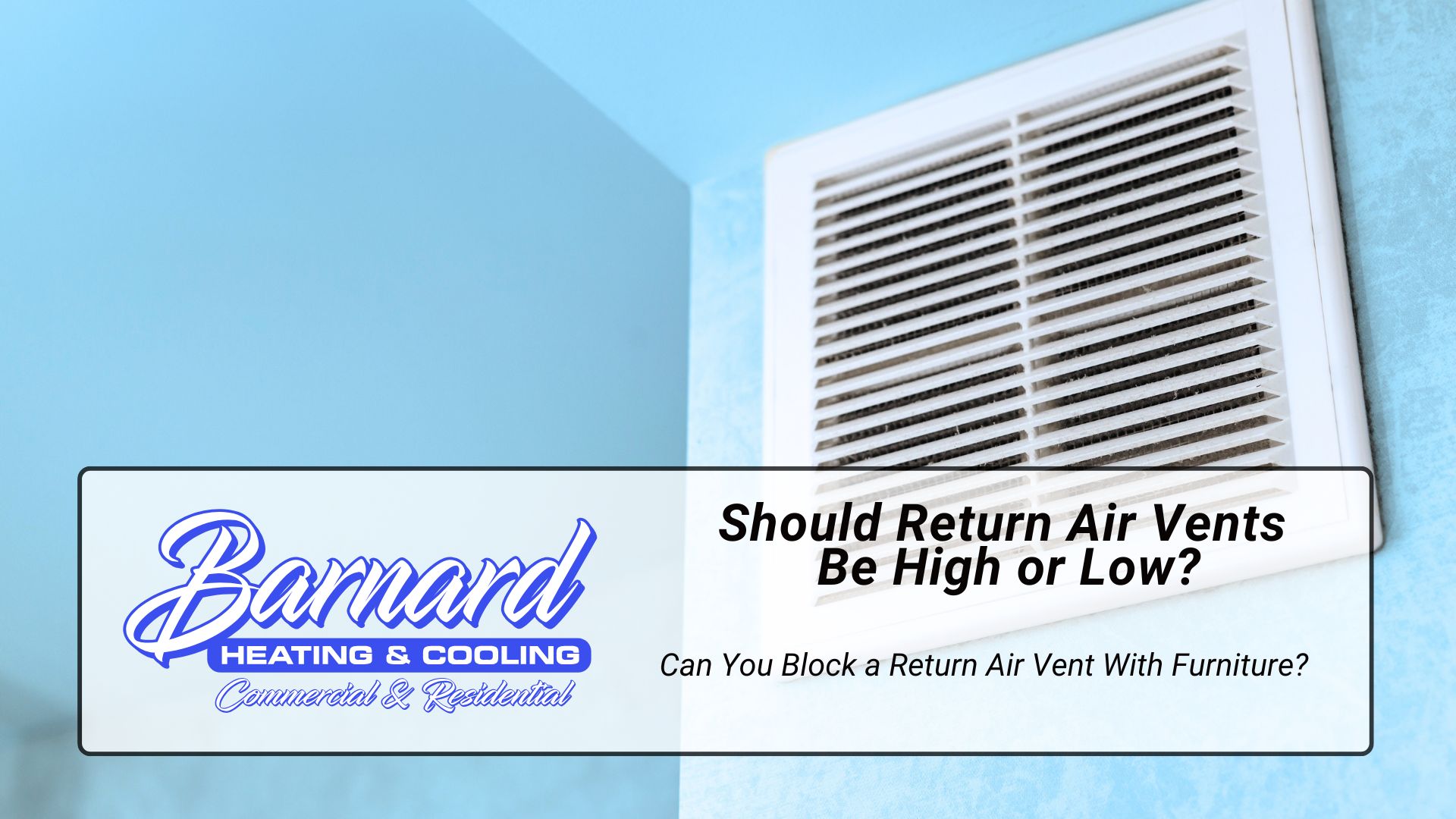Every part of your HVAC system plays a role in keeping your space comfortable, and return air vents are no exception. At Barnard Heating and Cooling, we often get the question: Should return air vents be high or low? The answer depends on your system design, building layout, and the climate conditions unique to Missouri.
As a family-owned business, we’ve helped our local community navigate everything from icy winters to humid summer heat. Let’s break down how air return vents work and what their placement means for your home or business.
What Does a Return Air Vent Do?
A return air vent pulls indoor air back into your HVAC system, allowing it to be heated or cooled again. This air is then pushed out through supply vents, completing the air circulation cycle. Good air movement keeps your system efficient and your home consistently comfortable.
Without enough or properly placed return vents, your system can experience airflow issues, leading to poor air quality, uneven temperatures, and even system strain.
High vs. Low Return Air Vents
So, should return air vents be high or low? That depends on whether you’re heating or cooling:
- High return vents are ideal for air conditioning. Since warm air rises, high vents pull that warmer air back into the system, leaving the cooler air to settle near the floor.
- Low return vents work better in the heating season. Heated air rises from the floor, so pulling from a low point allows for more efficient heat distribution.
Some homes, especially in climates like ours, benefit from both ceiling vents and floor vents. A dual-vent setup can use dampers to switch depending on the season, improving overall air pressure and system efficiency.
How Vent Placement Affects Performance
Vent location is only part of the equation. The effectiveness of your HVAC system also depends on other factors like:
- Air ducts: Blocked or leaky ducts can limit airflow, making even well-placed vents ineffective.
- Air filters: Dirty or clogged filters reduce airflow and can worsen indoor air quality. We recommend checking your air filter every one to three months, especially during peak seasons.
- Return air duct sizing: If your return air ducts are too small, air pressure builds up, straining the system. Proper sizing ensures smooth air circulation and better energy efficiency.
Getting Expert Help for Better HVAC Results
Many airflow problems go unnoticed until they start affecting comfort or utility bills. That’s when a trained HVAC technician comes in. At Barnard Heating and Cooling, we perform complete airflow assessments to ensure your air return system is balanced, your ducts are properly sealed, and your vents are positioned to maximize performance.
Whether you’re remodeling, building new, or trying to fix uneven temperatures in your current home, our team can help you make informed decisions.
Need Help With Your HVAC System?
If you’re still unsure if your return air vents should be high or low, or if your system doesn’t seem to be working correctly, don’t hesitate to reach out.
Barnard Heating and Cooling is your trusted local partner for all things HVAC. From checking your return air duct layout to improving air movement and ensuring clean filters, we’re here to keep your system running strong. Contact us today,and find out how we can improve your comfort, efficiency, and indoor air quality.
